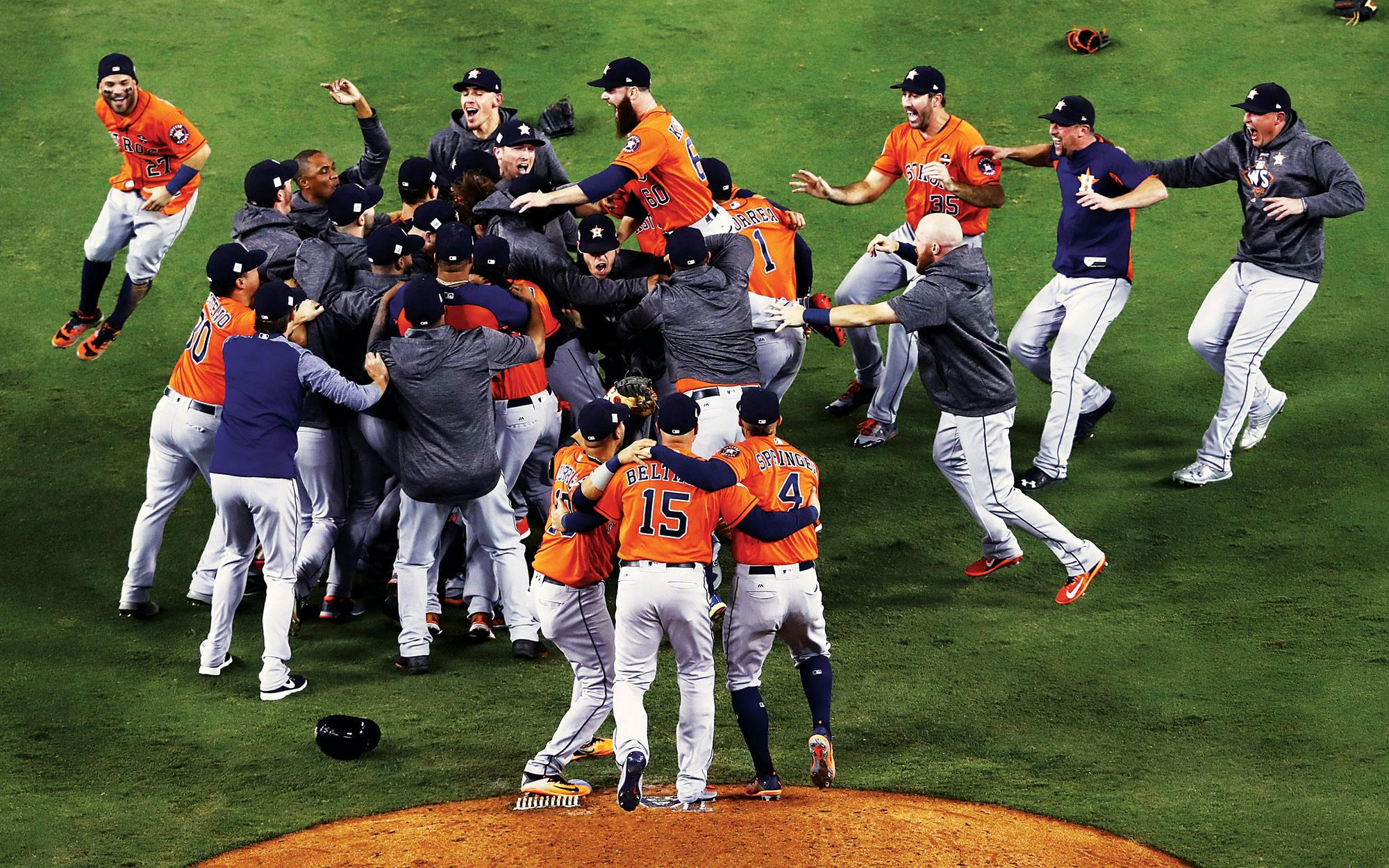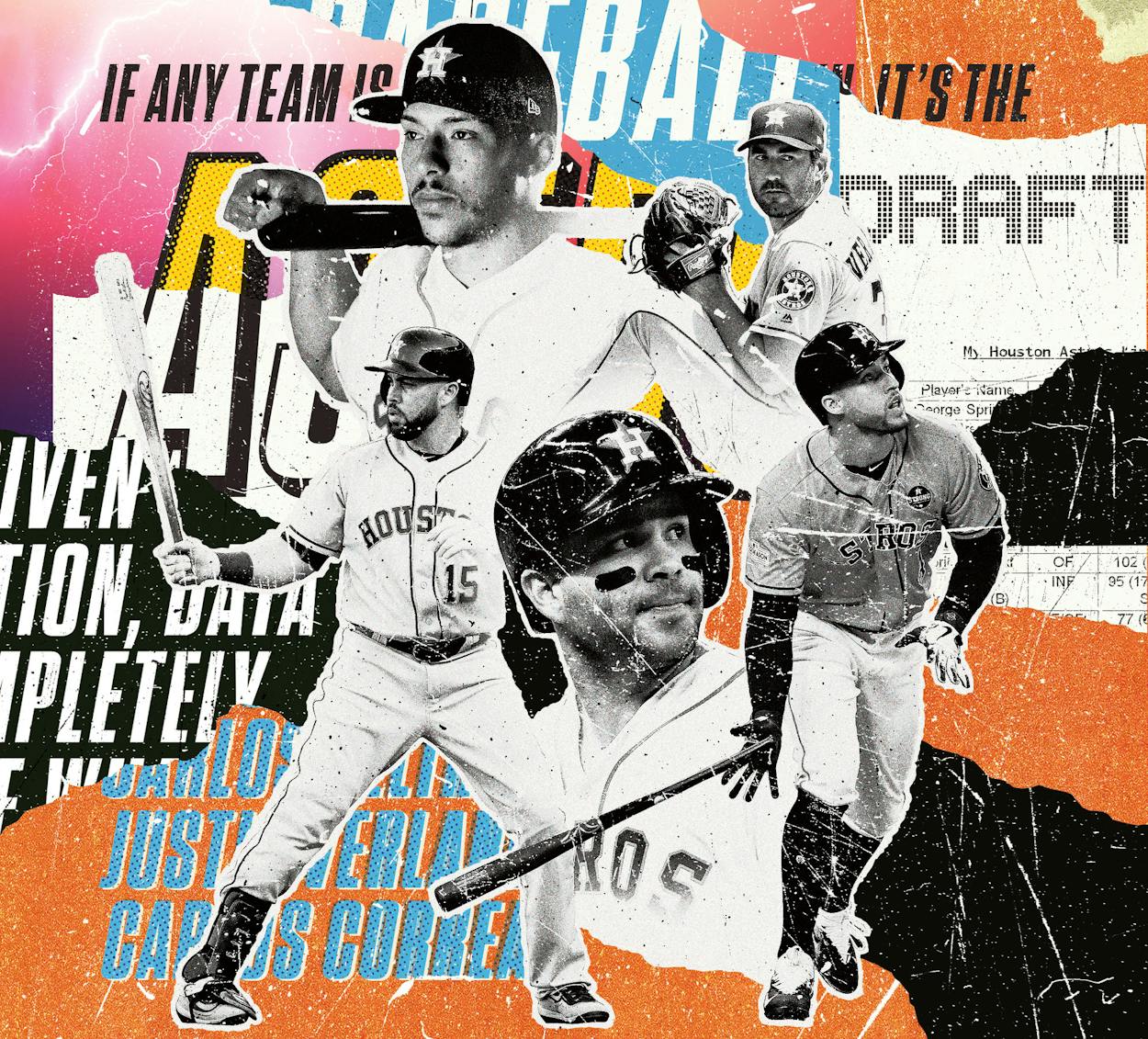When the famous June 2014 cover of Sports Illustrated boldly predicted the Astros’ 2017 World Championship, many balked—at the time, the team had lost over one hundred games for three consecutive seasons. And yet, just as writer Ben Reiter had divined, the former “laughingstock of baseball” defeated the Los Angeles Dodgers to win their first-ever championship last year. We spoke with Reiter, author of the just-out Astroball: The New Way to Win It All (Crown Archetype), about how the Astros pulled off the impossible and how they might do it again.
Because the team fully committed to general manager Jeff Luhnow’s turnaround plan. “A lot of times when teams are rebuilding, they’ll keep around a few old fan favorites for goodwill,” Reiter says. “Or they’ll buy a cheapish free agent, so the team will be bad but not historically bad.” Luhnow believed such compromises would only set his club back, so the Astros sold off capable but pricey players, including three-time All-Star Carlos Lee, valuing the pennant over sentimentality.
Because there was nowhere to go but up. “At Sports Illustrated, we were intrigued that the Astros were absolutely putrid. Like, what is going on down there?” Reiter recalls. In 2014, after their third straight year of being the worst team in baseball, Astros management gave Reiter full access to their draft discussions and strategy meetings. “I think they felt that revealing some of the proprietary stuff they were up to was worth a real, unbiased account of their plans,” Reiter says.
Because they hired a NASA engineer to run their data-analytics operation. Reiter sat down at Minute Maid Park to watch a game with Sig Mejdal, the Astros’ director of decision sciences, a position Luhnow created for him shortly after taking over the team in 2011. As the innings went by, Mejdal explained the Astros’ philosophy, which involved melding gut instinct with advanced statistical analysis to guide the team’s decisions. “It was clear to me that this was not just someone building a computer program,” Reiter says. “This was someone whose worldview was all-encompassing. That’s when I thought, these guys have a much deeper understanding of this process than outside people realized.”

Because owner Jim Crane didn’t care about short-term success. Crane eschewed the idea that winning as many games as possible every season was the chief metric of success. At his first press conference after he and a few minority partners bought the team, in 2011, he said, “My partners aren’t going to be excited to keep writing check after check.”
“He was openly telling his home city that they weren’t going to be spending a lot of money on the team until it was time,” Reiter says. “He has a clear idea of process and what success really means.”
Because they focused on developing young talent. When Reiter’s editor at SI asked him when he thought the Astros would be in a position to contend for the World Series, he looked to the team’s emerging stars before deciding on 2017. “It wasn’t rocket science—you looked at the rate they were improving, and then you looked at the ages of the players who were going to be their core: José Altuve and Carlos Correa, who was then in the minors,” Reiter says.
Because of Carlos Beltrán. “The Astros were smart enough to realize that even though they were a data-driven organization, data couldn’t completely determine what it took to be a winning team, especially when it came to things like team chemistry,” Reiter explains. Lacking veteran leadership, in 2016 they signed Carlos Beltrán, the second-oldest position player in the league, at 39. Beltrán became a sort of clubhouse mentor: he worked to bridge the language gap between the English and Spanish speakers and taught his younger teammates how to use statistics to their advantage. Critically, in the World Series, he figured out that Dodgers right-hander Yu Darvish was accidentally tipping his pitches; Beltrán showed the Astros’ batters how to read him. “It’s not an exaggeration to say the Astros would not have won the World Series without Beltrán, even though he only hit fourteen home runs that season,” Reiter concludes.
Because they broke their own rules. According to the Astros’ computer models, acquiring Justin Verlander was a bad move. And yet, right at the trade deadline, they secured the 34-year-old pitcher for $28 million a year in exchange for three good prospects. “Crane was encouraging Luhnow to do something big, in part because the city had just been slammed by Hurricane Harvey,” Reiter says. When the team didn’t land a big name at the regular trade deadline, Astros ace Dallas Keuchel expressed his frustration to the media. Crane and Luhnow sensed the squad was demoralized and needed a final ingredient. “Basically, they realized the model that had gotten them so far turned out to be imperfect,” Reiter says. “It was a gut call. And boy, it was the right one.”
Because this Astros team was built to last. “I’m feeling good about my prediction that they’ll repeat this year,” Reiter says. “This team is much better than last year’s team.” In 2017 the Astros started the season with one ace, Keuchel. Now their starting rotation features Keuchel, Verlander, and the newly acquired Gerrit Cole. And thanks to Luhnow and Mejdal, the team is structured so that it won’t lose a contingent of its core players at any one time. A few players will come and go each year, but there won’t be a year when the bottom falls out and the Astros’ ranking plummets. Plus, their farm system remains among the best in the league. “The idea is to continue to cycle as a winning team indefinitely,” Reiter says. “If any team is set up for a long run, it’s the Astros.”









